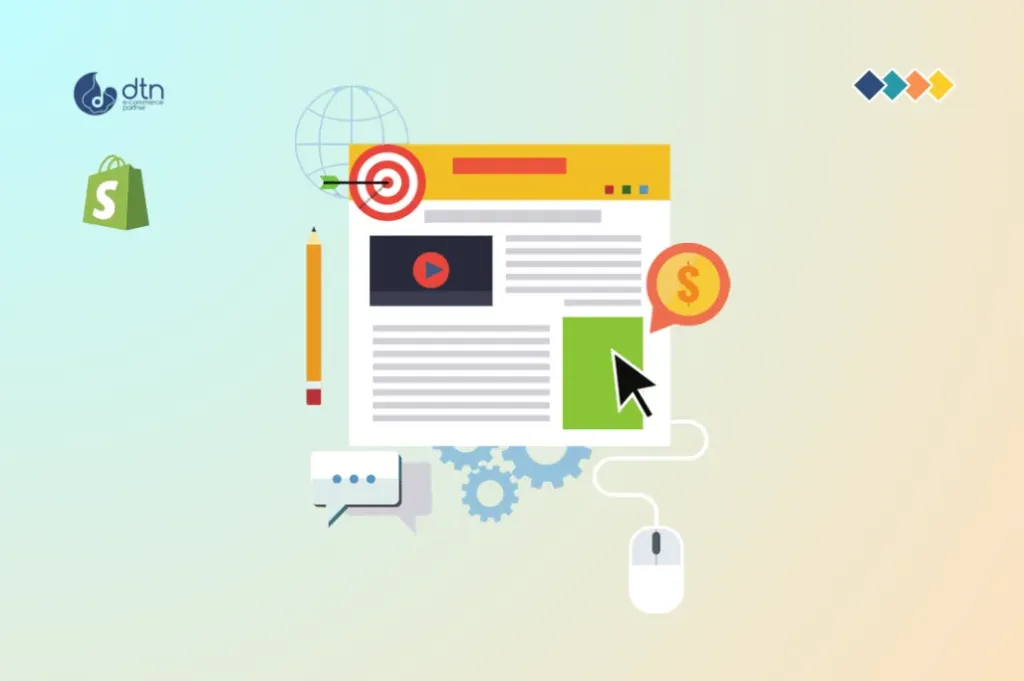A Shopify store isn’t just about selling products; it’s about building a brand and connecting with your audience. Your blog is a crucial tool for achieving both. It allows you to share valuable content, improve your SEO, drive traffic, and ultimately, boost sales. This comprehensive guide will walk you through setting up a successful Shopify blog, from initial configuration to optimizing for search engines and engaging readers.
Table of Contents
Part 1: Accessing and Configuring Your Blog
The first step is accessing your Shopify blog. This is typically straightforward:
- Log in to your Shopify admin: Navigate to your Shopify store’s admin panel using your login credentials.
- Navigate to “Online Store”: In the left-hand menu, you’ll find the “Online Store” section. Click on it.
- Select “Blog”: Within the “Online Store” menu, you should see a link or option labeled “Blog.” Clicking this takes you to your blog’s management area.
- Create your first blog post (optional): While not strictly necessary at this point, creating a placeholder post allows you to see how your blog will appear. You can always delete this later.

Part 2: Customizing Your Blog’s Appearance
Your blog’s appearance is vital for creating a cohesive brand experience and encouraging reader engagement. Shopify offers several ways to customize its look and feel:
- Themes: Your Shopify theme dictates the overall design of your blog. Most themes include built-in blog functionality, often with customizable settings. Explore your theme’s settings to adjust:
- Blog layout: Choose between single-column, two-column, or other layouts.
- Blog post display: Customize how individual blog posts are presented, including featured images, excerpts, and author information.
- Pagination: Control how many posts are displayed per page and how readers navigate through multiple pages.
- Fonts and colors: Align the blog’s typography and color scheme with your overall brand identity.
- Theme Editor (Advanced): For more advanced customization, you can use the Shopify Theme Editor. This allows you to directly edit the code of your theme (proceed with caution if you’re not familiar with coding). Ensure you have a backup of your theme before applying any changes to the code.
- Blog header and footer: Many themes allow you to customize the header and footer of your blog, ensuring consistency with your website’s overall design.
- Using a custom domain: Instead of your shopify.com subdomain, using a custom domain (e.g., yourbrand.com/blog) strengthens your branding and improves SEO. This is usually configured through your Shopify admin’s domain settings.

Part 3: Optimizing Your Blog for Search Engines (SEO)
A well-optimized blog attracts organic traffic from search engines like Google. Here’s how to maximize your blog’s SEO potential:
- Keyword Research: Identify relevant keywords related to your niche and products. Leverage tools such as Google Keyword Planner, Ahrefs, or SEMrush to identify keywords that have a high search volume and relatively low competition.
- On-Page Optimization: Implement SEO best practices within your blog posts:
- Title tags: Use relevant keywords in your title tags, keeping them concise and engaging.
- Meta descriptions: Write compelling meta descriptions that accurately summarize your posts and entice clicks.
- Header tags (H1-H6): Structure your content with header tags to improve readability and SEO.
- Image optimization: Use descriptive file names and alt text for all images to improve accessibility and SEO.
- Internal and external linking: Link to relevant pages within your website and authoritative external sources.
- Blog Post Structure: Organize your blog posts logically with clear headings, subheadings, and bullet points to enhance readability and SEO.
- URL Structure: Keep your blog post URLs clean and concise, ideally incorporating relevant keywords.
- Sitemaps: Submit your Shopify sitemap to Google Search Console and Bing Webmaster Tools to ensure search engines can easily crawl and index your blog content.

Part 4: Creating Engaging Blog Content
The content itself is the heart of your blog. Prioritize crafting content that is both high-quality and meaningful to engage your intended audience.
- Content Pillars: Develop a content strategy around key topics related to your products and industry.
- Different Content Formats: Experiment with various content formats, including blog posts, listicles, how-to guides, case studies, and videos.
- High-Quality Writing: Ensure your writing is clear, concise, and engaging. Incorporate visuals to separate blocks of text and enhance the reading experience.
- Promote Your Blog: Share your blog posts on social media, email marketing campaigns, and other channels to reach a wider audience.
- Call to Action (CTA): Include clear calls to action in your blog posts, encouraging readers to take specific actions, such as subscribing to your newsletter, visiting your product pages, or leaving comments.

Part 5: Monitoring and Analyzing Your Blog’s Performance
Regularly monitor your blog’s performance to understand what’s working and what needs improvement:
- Shopify Analytics: Shopify provides built-in analytics to track key metrics such as website traffic, bounce rate, and average session duration.
- Google Analytics: Integrating Google Analytics provides more in-depth insights into your blog’s performance.
- Social Media Analytics: Track the performance of your blog posts on social media platforms.
By consistently creating high-quality content, optimizing your blog for SEO, and analyzing your results, you can leverage your Shopify blog to drive traffic, build your brand, and ultimately increase your sales. Remember that building a successful blog is a long-term process, requiring consistent effort and dedication.

Frequently Asked Questions
We’ve compiled a list of answers to common questions.
Why is having a blog important for my Shopify store?
A blog builds brand awareness, strengthens customer connections, and improves SEO, which can drive more traffic to your store and boost sales.
How do I access and set up my Shopify blog?
- Log in to your Shopify admin panel.
- Go to “Online Store.”
- Click on “Blog” to access management options.
- (Optional) Create a placeholder blog post to preview your layout.
What customization options does Shopify offer for my blog’s appearance?
You can customize with:
- Themes: Select layouts, post display options, pagination, fonts, and colors.
- Theme Editor: Edit theme code for deeper customization if you’re experienced.
- Custom Domain: Use a unique domain (e.g., yourbrand.com/blog) for branding and SEO.
How can I optimize my Shopify blog for search engines?
Conduct keyword research, apply on-page SEO practices (e.g., optimized titles, meta descriptions, and headers), organize content with clear headings and bullets, maintain concise URLs, and submit your sitemap to search engines.
What types of content should I create for my blog?
Create valuable, high-quality content that engages your audience. Use content pillars around key topics, explore formats like how-to guides and videos, and focus on clear, engaging writing. Promote posts on social media and include CTAs to boost engagement.
How can I monitor my blog’s performance?
Use:
- Shopify Analytics: Track basic metrics like traffic and bounce rates.
- Google Analytics: Gain deeper insights into user behavior and overall performance.
- Social Media Analytics: Evaluate the impact of shared posts on social platforms.



